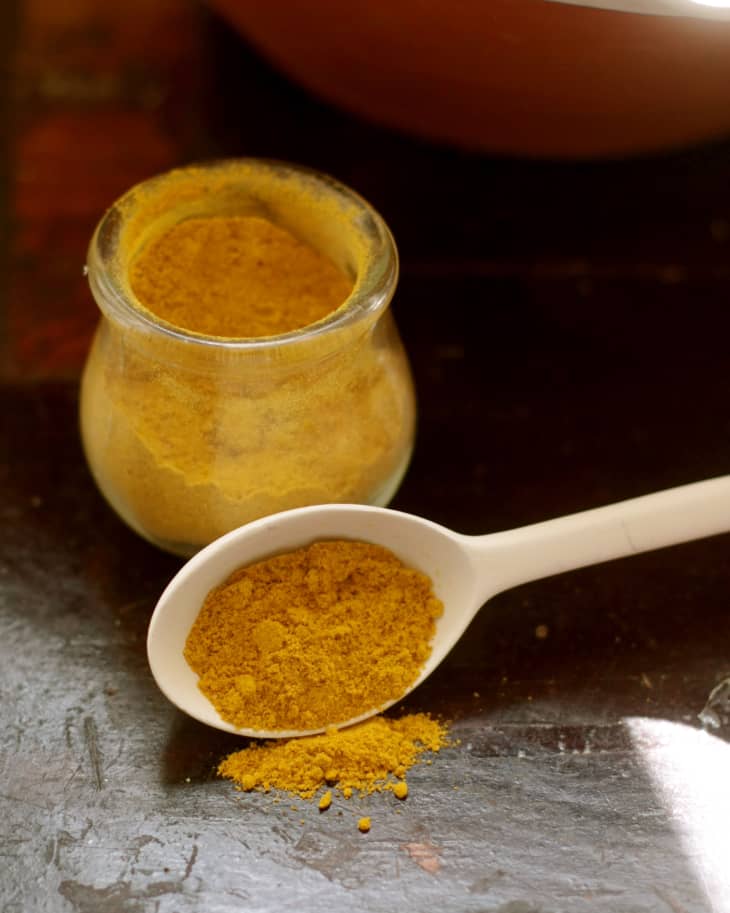In Defense of Curry Powder
We independently select these products—if you buy from one of our links, we may earn a commission. All prices were accurate at the time of publishing.
(Image credit: Apartment Therapy)
I’ve heard it said that curry powder — that deep yellow blend of spices you can find premixed and on offer in almost any grocery store’s spice rack — is not for serious cooks. And there’s some truth to that. Curries are a complex category of dishes, and a true curry will have a specific blend of spices to match the ingredients and methods used. There are thousands of curries and to apply one generic powder to all of them is frankly insulting. That said, I still keep a small jar of the generic curry powder in my spice cabinet and I feel it has its place, but just not in most curries!
The typical supermarket curry powder usually consists of coriander, turmeric, cumin, fenugreek, and red pepper, although each brand is different. I wasn’t aware of Indian food when I was growing up in a Wisconsin suburb, so I never had much experience with true curries, but my mom did have a jar of curry powder in the spice cabinet. Its most famous use was for curried egg- or chicken salad, and we still use it for that today. For me, this jarred curry powder is the only spice to use for these mayonnaise-based salads.
There are a few other recipes that traditionally use curry powder and wouldn’t quite taste right without it. Mulligatawny soup, an Anglo-Indian creamy rice and chicken soup, is flavored with curry powder and I’ve come to expect its flavor there. There’s also a way that a small amount of curry powder (about 1/4 or 1/2 teaspoon) works as a background flavor, something you don’t immediately recognize but adds a certain complexity to a dish. I’ve seen this use of curry powder in recipes for deviled eggs and lettuce soup.
Finally, there is a dish my family makes called
Chickpea Curry that is probably the kind of dish that would taste more authentic if store-bought curry powder wasn’t used. However, my family has been making this dish for over 20 years with store bought curry powder and while I’m sure it would be delicious, perhaps even better, with a custom blend, I still make it the way we always do: with a tablespoon of the yellow stuff. Despite its inauthenticity, the familiar flavor of curry powder is what defines this dish for me.
Do you keep curry powder in your spice kit? What are your favorite ways to use it?
(Image: Dana Velden)
